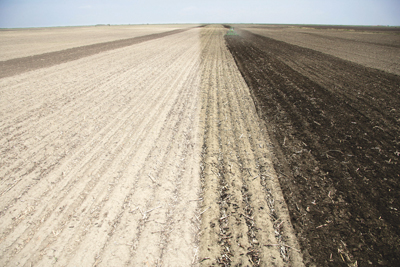
In northeast China's Heilongjiang Province, there is a region known as the "Great Northern Wilderness." Rich in natural resources, Beidahuang, as it is formally known, once attracted numerous prospectors in a Chinese gold rush. Ancient Chinese emperors yearned to develop the land there, and, in the first half of last century, Japanese occupiers brought 300,000 immigrants to settle the region with similar goals in mind. Yet many years passed and the region remained wilderness.
Since 1947, the wilderness has gradually changed. Around 100,000 retired service people and hundreds of thousands of civilian youths met the call by the Chinese Government to resettle this land. Since then Beidahuang has become the bread basket of China. It is now the country's largest soybean producing area and one of the major producers of rice and wheat. The agricultural modernization level there not only ranks first in China, it is also among the most advanced in the world. In the summer of 2007, this region in Heilongjiang will celebrate the 60th anniversary of its reclamation.
Cultivated with lives
From Harbin, the provincial capital of Heilongjiang, stretching to the east, west and north is fertile black-soil farmland interspersed with belts of forest. Upon seeing this land, you know you have stepped into the reclamation area of Beidahuang-in China such characteristics only exist here.
"These are all fertile lands with yields of nearly 7,500 kg per hectare," said Sun Dong, an employee of Puyang Farm.
In Beidahuang, there are 115 farms administered by the Heilongjiang Land Reclamation and Cultivation Bureau (HLRCB). Puyang Farm is one of them.
"The cultivated land here was once either swamp or covered by scrubland," Sun told Beijing Review. "Getting to the present situation took several decades of cultivation."
According to Xie Zhenhua, Section Chief of Information of the HLRCB, the Beidahuang reclamation project commenced in June 1947. Li Zairen and Liu Cen, army men at the time, led 16 others in the first cultivation of a piece of land 150 km away from Harbin. In their efforts these pioneers developed 100 hectares, thus launching the reclamation of Beidahuang. Later the group transferred to Ning'an and set up their first farm. In November 1947, they broke ground on Tongbei Farm. From 1947 to the 1970s, all the depopulated wastelands in Beidahuang were cultivated and farms sprouted one after another.
"Developing Beidahuang was of great importance for ensuring China's food security," Xie said.
By the mid-1900s, successive wars had almost destroyed China's industrial and agricultural systems. There was no grain surplus to support the country's industrialization process. Since there were large areas of deserted land in Beidahuang, the Chinese Government decided to set up a "grain factory" there.
"Beidahuang was cultivated by three generations of people," said Liu Na from the Heilongjiang Land Reclamation and Cultivation Museum. In this museum, various artifacts and pictures documenting the reclamation of Beidahuang are displayed.
Comparing the scenery now-high-rises are everywhere-with the scenes shown in the museum's pictures, it is hard to imagine how people survived in the poor conditions at the time the reclamation began. The lowest temperatures can reach 50 centigrade below zero in winter. Two thirds of each year the land is frozen, with the depth of frost in the soil stretching 2.5 meters below the surface.
| 